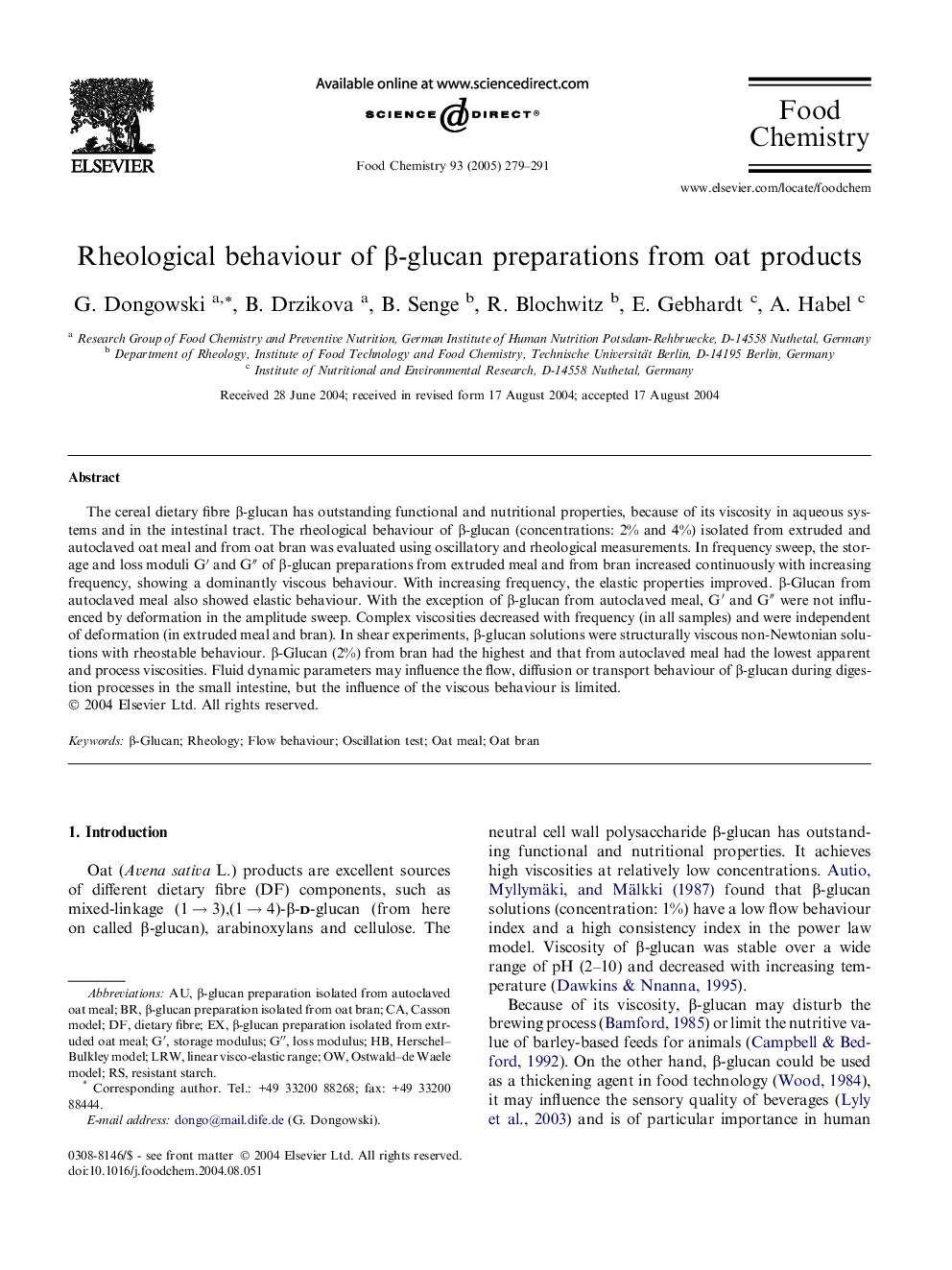| Article ID | Journal | Published Year | Pages | File Type |
|---|---|---|---|---|
| 10545077 | Food Chemistry | 2005 | 13 Pages |
Abstract
The cereal dietary fibre β-glucan has outstanding functional and nutritional properties, because of its viscosity in aqueous systems and in the intestinal tract. The rheological behaviour of β-glucan (concentrations: 2% and 4%) isolated from extruded and autoclaved oat meal and from oat bran was evaluated using oscillatory and rheological measurements. In frequency sweep, the storage and loss moduli GⲠand GⳠof β-glucan preparations from extruded meal and from bran increased continuously with increasing frequency, showing a dominantly viscous behaviour. With increasing frequency, the elastic properties improved. β-Glucan from autoclaved meal also showed elastic behaviour. With the exception of β-glucan from autoclaved meal, GⲠand GⳠwere not influenced by deformation in the amplitude sweep. Complex viscosities decreased with frequency (in all samples) and were independent of deformation (in extruded meal and bran). In shear experiments, β-glucan solutions were structurally viscous non-Newtonian solutions with rheostable behaviour. β-Glucan (2%) from bran had the highest and that from autoclaved meal had the lowest apparent and process viscosities. Fluid dynamic parameters may influence the flow, diffusion or transport behaviour of β-glucan during digestion processes in the small intestine, but the influence of the viscous behaviour is limited.
Keywords
Related Topics
Physical Sciences and Engineering
Chemistry
Analytical Chemistry
Authors
G. Dongowski, B. Drzikova, B. Senge, R. Blochwitz, E. Gebhardt, A. Habel,
